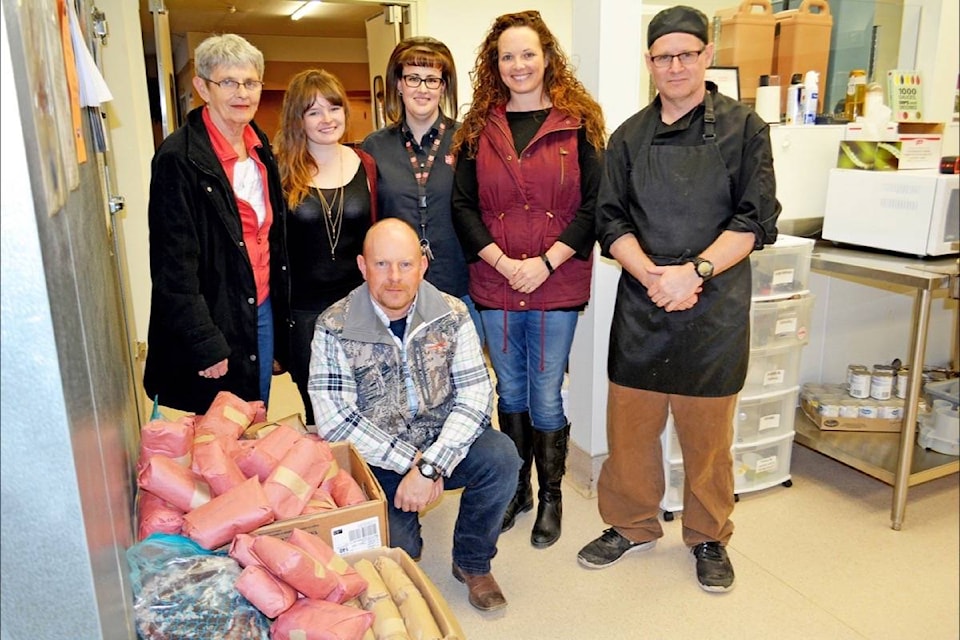Every year the Guide Outfitters Association of B.C. (GOABC) donates thousands of pounds of meat for people in need.
“We donate throughout the province,” said Doug McMann who along with his wife Julie have owned and operated Skinner Creek Hunts in Tatlayoko Lake in the West Chilcotin for seven years.
About 40,000 pounds goes directly to First Nations and on Friday, April 13, the McManns brought 300 pounds of moose and caribou meat to the Salvation Army in Williams Lake for its soup kitchen.
Because many hunters come from other areas outside of B.C. and Canada and cannot take the game home with them, they donate the meat and want to know where it’s going, McMann said.
“We have expanded on our donation program and have been trying to get more of the meat going to local Salvation Armies,” he added.
“Last year during the fire it was terrible and the Salvation Army ended up feeding more people so we started bringing meat here and to families who lost their homes and had no insurance.”
McMann said through the food giving GOABC hopes to show the public that hunting is a renewable resource if it is dealt with properly.
The meat is a variety of moose, bear, caribou and mountain goat, depending on the season.
“Spring bear season is a popular one when nothing else is available. It makes good hamburger,” McMann said.
When a guide outfitter is out with a client, all of the meat from the animal is brought to a butcher, and in Williams Lake that is often to Margetts Meats.
“Some of the meat we brought today came from the Fort Nelson and Fort St. John area because they were helping out during the fires last year,” McMann said.
“We actually had outfitters from all over the province sending it here last year. The Conservation Officer Service out of Fort St. John sent us down a moose as well because they had too many up north.”
GOABC pays for most of the meat cutting costs and during last summer’s fires was paying for all of it, which is usually about 80 cents a pound, McMann said, noting sometimes the Salvation Army pays too, depending on where the meat comes from.
Williams Lake Salvation Army family services co-ordinator Tamara Robinson said the meat is used to making meals to feed people during the day.
“We made 22,641 meals in 2017 and that didn’t include the meals served at the emergency social services centre at Williams Lake Secondary,” Robinson said.
“After the wildfires our freezers were empty because we were relying on what we could source.”
In 2017, the Salvation Army received around 1,400 pounds of meat, Robinson said.
Cariboo Chilcotin Liberal MLA Donna Barnett was on hand for the meat donation and said she applauds the McManns and other guide outfitters for the donation program.
“Too many people think that these people just go out and make all this money and that’s the end of it,” Barnett said.
“They waste nothing when they go out and do a hunt. They take care of the animals and what’s out there and try to protect them so they continue to multiply and grow.”
Barnett also said the McManns’ daughter Courtney is coming to do a Grade 12work experience placement with her this spring.
“Courtney is interested in going into politics,” Barnett said.
news@wltribune.com
Like us on Facebook and follow us on Twitter
